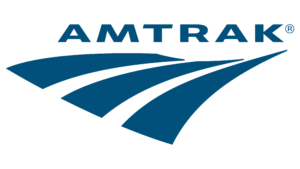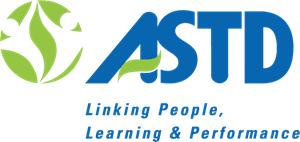Managing and
Supervising Effectively
Moving from an Operational Manager to a Strategic Leader
Series: Enhancement Skills
Course: Moving from an Operational Manager to a Strategic Leader
Gain the insights and skills to know where your business stands today and where it’s heading tomorrow.
In today’s unpredictable business environment, strategic leadership is not just for top management alone. It’s for:
• Managers who want to increase their competitive advantage by anticipating their customers’ priorities, needs and expectations
• Managers who want to distinguish operational data from strategic data, creatively develop sources of information and increase their staffs’ flexibility and responsiveness
• Managers who want to broaden their perspective, improve flexibility without compromising quality and increase their department’s value to the organization
• Every manager who wants to anticipate, initiate and manage change for maximum competitiveness!
If you want to move from being a good manager to being a great manager, you can’t afford to miss this seminar. Because strategic leadership is a blending of attributes that every superior manager requires in today’s unpredictable business environment.
Here’s where you’ll learn to anticipate, initiate and manage change for maximum competitiveness…stay on course while constantly redefining and refocusing your department’s goals in order to hit a moving target…and determine where your unit is headed, as you take into account the multiple groups your decisions will impact.
Prepare to make a transition. Instead of being buried in your department’s ongoing activities, you’ll become an innovator able to add value to your organization, its customers and stakeholders. This course will provide you with the skills required to move your team or department forward decisively.
"Committed to continually improving management, team, and organization performance."
- How Participants Will Benefit
- Topics We Will Address
- Inspire and direct your team to greater readiness and competitiveness
- Add value to your organization by understanding the needs of your customers
- Anticipate, create and encourage change
- Spot opportunities for successful strategic alliances
- Become an innovative, visionary leader
- Establish a strategic culture
- Identify the strengths and weaknesses in your work unit
- Keep your unit moving forward
- Take risks with confidence
- Crossing the line to strategic effectiveness
- Learning the strategic leadership approach
- Vision and strategic leadership
- Becoming an effective leader
- Building influence through communication
- Understanding the role of teams
- Managing change with action-oriented skills
Moving from an Operational Manager to a Strategic Leader
- Learning Objectives
- Crossing the Line from Operational Management to Strategic Leadership
- Mission of the Organization
- A Vision of the Future
- A Strategic Frame of Reference
- Priorities for Strategic Action
- Profile of the Manager/Leader
- Communication and Influence Skills
- Leading Change
- Strategic Plan for Personal Growth
- Inspire and Direct Your Team to Greater Readiness and Competitiveness
- Add Value to Your Organization by Understanding the Needs of Your Customers
- Anticipate, Create, and Encourage Change
- Spot Opportunities for Successful Strategic Alliances
- Become an Innovative, Visionary Leader
- Establish a Strategic Culture
- Identify the Strengths and Weaknesses in Your Work Unit
- Keep Your Unit Moving Forward
- Take Risks with Confidence
- Identify Your Own Specific Needs for Learning Related to the Content of the Seminar and Describe Them to the Group
- Establish a Working Definition of Operating Management and Strategic Leadership by Examining the Evolving Roles of Managers and Leaders in the Workplace
- Explore the Key Attributes of Managers vs. Those of Leaders
- Assess Your Current Use of Effective Operating Management and Strategic Leadership Practices in Your Current Work Setting
- Clarify the Purpose of Your Work Unit in the Context of Your Organization
- Develop a Working Draft of a Mission Statement That Will Form the Basis of Further Strategic Decisions
- Identify the Forces Influencing the Future of Your Work Unit
- Develop an Inventory of the Strengths, Weaknesses, Opportunities, and Threats (SWOTs) That You Recognize in Your Business
- Select a Target for Future Business Success
- Develop an Initial Draft of a Vision Statement to Take Back to Your Unit
- Formulate a Plan to Implement the Visioning Process as a Key Step in Applying Your New Strategic Leadership Skills Back in the Workplace
- Develop a Strategic Approach for Your Own Work Environment
- Define Key Outputs at Each Level, Using the Model as a Planning Tool, for Your Actual Business Situation
- Use a Tool for Setting Your Work Unit’s Priorities, Given a Range of Information from and about Your Customers
- Determine Optimal Approaches for Developing Customer Input and Data
- Apply the Tool to a Real Business Situation
Develop a Plan to Use the Tool Back at Work
- Evaluate Your Current Application of Managerial and Strategic Leadership Approaches Using a Self-assessment Tool
- Identify Your Current Key Strengths and Areas for Development
- Plan Specific Actions to Take Back to Your Workplace by Looking at Your Own Staff in Terms of What They Currently Need from You as a Strategic Leader
- Assess Current Influence Skills and Practices
- Develop Strategies for Increasing Your Influencing Skills as a Leader
- Explore a Range of Options for Enhancing Communication Effectiveness
- Identify Three Types of Change
- Relate Organizational Change to Major Business Trends
- Assess Your Skills in Leading Change
- Plan Strategies for Specific Change
- Revisit Concepts from the Program for Application Back at Work
- Select Specific Applications of the Concepts Presented for Taking Action in Your Unit When You Return to Work Using the Self-Assessments, Models, Activities, and Individual Exercises from This Program
- Develop Specific Implementation Strategies, Including a Timetable










Contact
Pinnacle Performance
Improvement Worldwide
United States of America
